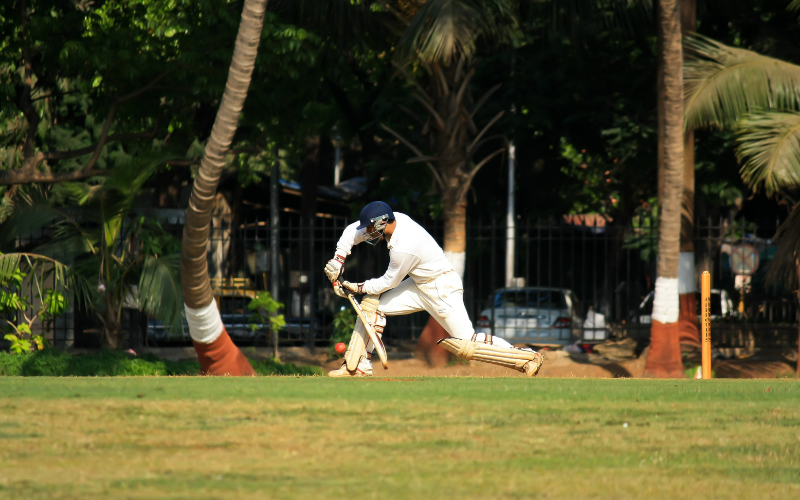Win probability cricket has become a fascinating way to assess the chances of a team winning during a match. From casual fans to analysts, this concept offers valuable insights that make the game more engaging. But what exactly is win probability, how is it calculated, and why has it become such an important metric?
In this article, we’ll break down the concept of win probability cricket, how it works, and why it has become a vital tool in modern cricket analysis.
What is Win Probability Cricket?

Win probability cricket refers to a statistical estimation of a team’s chances of winning a match at any given point. This metric is typically represented as a percentage and changes dynamically based on various match events, such as wickets falling, runs scored, and overs remaining.
For example, if a team is chasing 300 runs in a One-Day International (ODI) match and is 150 for 3 after 30 overs, the win probability model can predict the likelihood of the chasing team winning.
This dynamic calculation helps viewers, players, and analysts understand the game better and anticipate outcomes based on current conditions.
Factors That Influence Win Probability Cricket
Several factors impact win probability cricket, making it a dynamic and evolving measure:
- Match Format:
- In Test cricket, win probability also considers the likelihood of a draw.
- In T20s, the fast-paced nature of the game results in more dramatic swings in probability.
- Wickets in Hand:
Losing key players, such as the top-order batsmen, reduces a team’s win probability significantly. - Run Rate:
A team’s required run rate versus their current scoring rate plays a major role. - Pitch Conditions:
A slow, turning pitch favors bowlers, reducing the batting team’s chances of winning. - Match Situations:
Events such as partnerships, quick wickets, or sudden collapses can cause massive shifts in win probability. - Weather:
Rain interruptions can lead to reduced overs, changing the dynamics of the game.
How Win Probability Cricket is Calculated
Win probability is derived using statistical models that consider historical data and real-time match variables. Here’s an outline of how these models generally work:
Historical Data Analysis
Data from past matches under similar conditions (venue, weather, and pitch) is analyzed to create a baseline.
Dynamic Inputs
As the game progresses, real-time inputs like runs scored, wickets fallen, and overs left are factored in.
Machine Learning Models
Some advanced models use machine learning, allowing them to improve over time by identifying patterns in historical and live data.
Context-Specific Adjustments
Adjustments are made based on unique game factors, such as the strength of the teams or the importance of the match (e.g., finals vs. group stage).
For example, if a team needs 50 runs from the last 5 overs with 5 wickets in hand, the win probability model calculates their chances by analyzing how similar scenarios have played out in the past.
Why is Win Probability Important in Cricket?
Win probability cricket is more than just a fun statistic; it serves several practical purposes:
Enhancing Viewer Experience:
Fans can understand the impact of every ball, wicket, or boundary on the game’s outcome. It adds an element of suspense, especially during tight chases.
Strategic Decisions for Teams:
Teams can use this data to adjust strategies, such as deciding whether to play aggressively or defensively.
Broadcast Insights:
Broadcasters use win probability graphics to engage audiences and provide a clearer picture of the match situation.
Performance Analysis:
Post-match analysis becomes more comprehensive with insights into how win probability changed at different stages.
Fan Engagement:
It helps new fans understand the game better, making cricket more accessible to a wider audience.
The Role of Technology in Win Probability
Modern technology plays a significant role in refining win probability models:
- Hawk-Eye and Ball Tracking: These systems provide data on ball trajectories and pitch behavior.
- Data Analytics Platforms: Advanced platforms like CricViz use algorithms to deliver real-time win probabilities during matches.
- Player Insights: Player-specific data, such as strike rates and bowling economy under pressure, enriches the accuracy of the predictions.
Limitations of Win Probability Cricket
While win probability is an exciting tool, it’s important to understand its limitations:
Unpredictability
Cricket is inherently unpredictable, with surprises like unlikely comebacks and collapses.
Context Dependency
Models may not fully account for emotional factors, such as crowd support or pressure during high-stakes games.
Data Bias
Historical data can sometimes skew predictions, especially for newer players or teams with rapidly changing performance trends.
Subjectivity in Inputs
Pitch assessments and weather forecasts often have subjective elements that can affect accuracy.
How Win Probability Enhances Cricket Analysis
Win probability cricket has transformed the way we analyze the game. By visualizing how match scenarios evolve, fans and experts can pinpoint game-changing moments with greater clarity.
See more: Today Football Match Win Prediction – Tips for Success
Conclusion
Win probability cricket has become an integral part of how the sport is watched and analyzed. By combining historical data, real-time match conditions, and advanced analytics, this tool offers a fascinating way to predict and understand match outcomes.





One Response